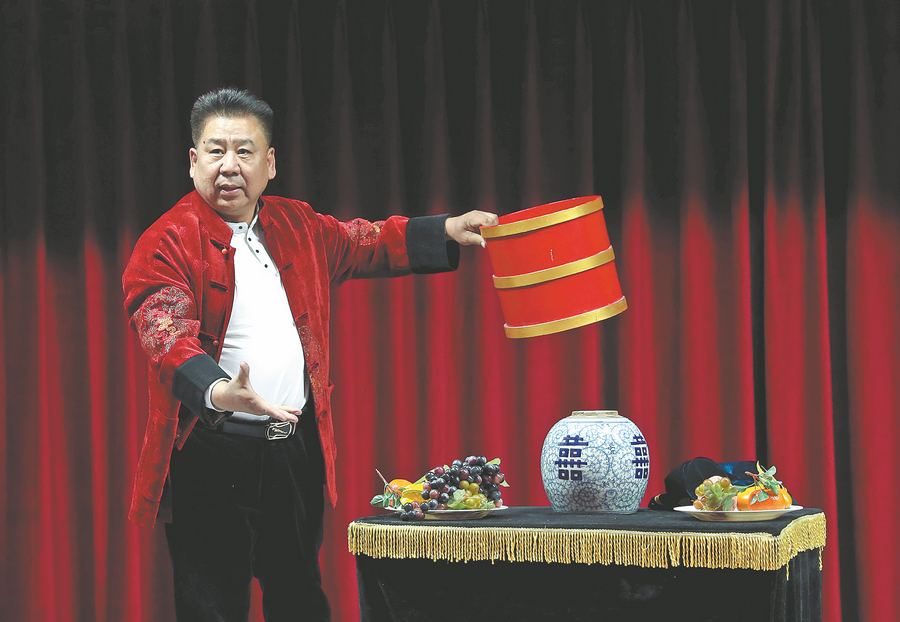

Tradition survives
Tian Xueming, a folk artist born and raised in Beijing, launched an indoor temple fair in the capital during Spring Festival this year.
Every day, hundreds of people visited his indoor fair, which covers about 3,000 square meters in a building in Deshengmen area. He hopes to make the venue a permanent destination for tourists, offering folk art performances every day.
Tian, 60, has worked at Beijing temple fairs since 1996 and performs magic tricks in addition to qigong and tai chi. He learned martial arts when he was a child, and despite his father's objections pursued a career as a folk artist.
"I was amazed by folk art when I went to temple fairs with my parents and my older brother as a kid. I didn't want to leave until the performers called it a day," said Tian.
Traditional temple fairs are where people pray for good luck for the new year and have fun with their families, he added. "As a performer, I love seeing children riding on their parents' shoulders, holding a windmill toy in one hand and a tanghulu (candied haws on a stick) in another hand."
In 1989, Tian enrolled at a performing arts school to learnHebei Bangzi, a traditional Chinese opera. Two years later he began training in more folk arts, such as magic tricks, lion dances and bian lian, a face-changing show.
In 2000, Tian founded a school to keep those folk arts alive. He worries that such skills and traditions are fading away as the younger generation has more entertainment options.
"Today, life is much better than when I was a child. We have phones to call our families in a different city or even a different country. We don't need to wait for Lunar New Year to buy new clothes or eat food we want, such as dumplings. However, the core of Spring Festival is the same; it is about family and memories," said Tian.
chennan@chinadaily.com.cn